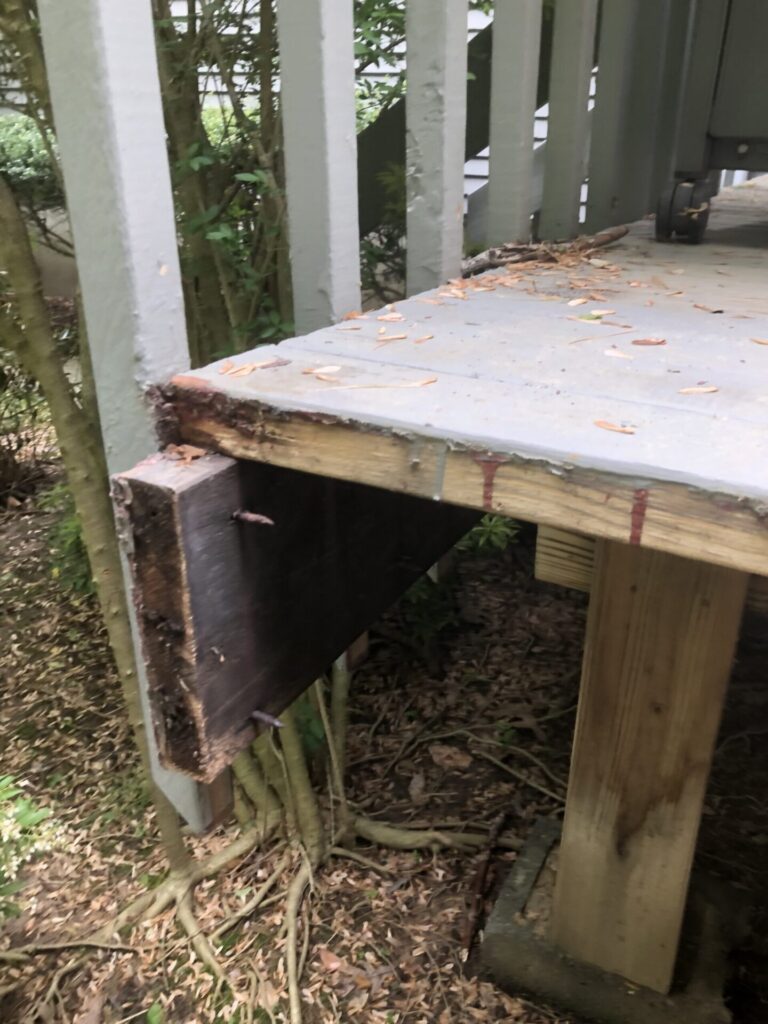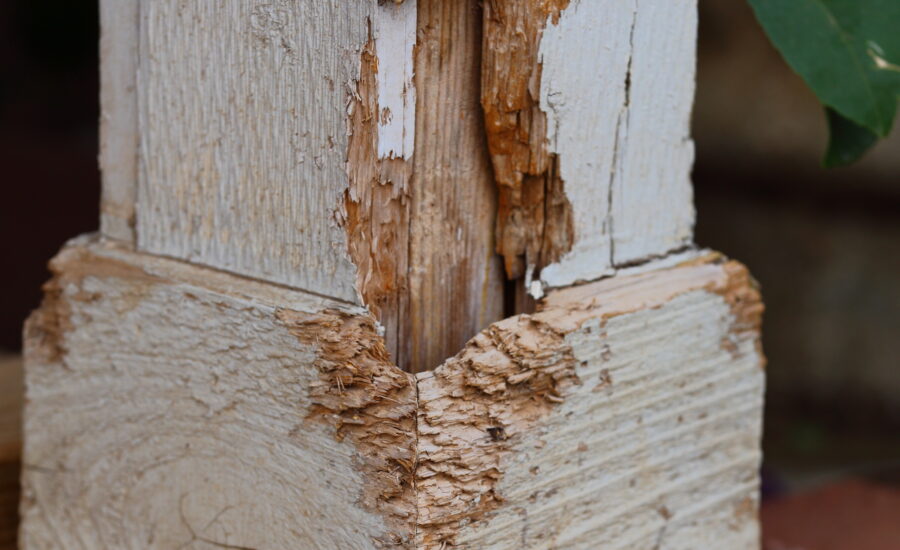Wood Rot .. Rotten to the Core! What it is and What it’s Not.
Water damage and wood rot are huge threats to the stability and value of your home. Wood rot is microscopic organisms that thrive in this moist environment and destroy the wood. As they grow, they can transfer from one area to another spreading the rot to new structures. It’s like your wood has a cold or flu! Once it gets inside the home, or inside your wood structure, its hard to get rid of! Home maintenance is important. Working with an experience craftsman, or skilled handyman who know what to look for is key. We will share our expert tips with you:
Our craftsmen say the most common causes of wood rot:
- Exposure to elements of rain, wind and erosion
- Clogged gutters, roof or siding damage,
- Cracked door frame or windowsill,
- Worn flashing or improper installation
- Sitting water or improper drainage around the
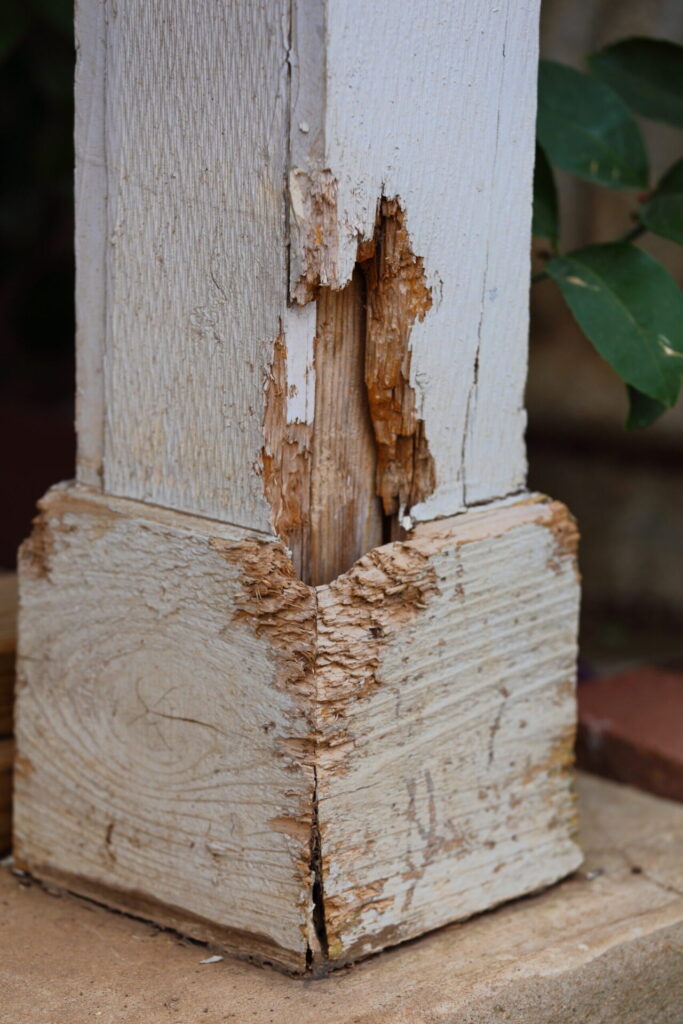
The problem can spread and penetrate deeper into the wood of your home causing more damage, carpentry issues and increase your home repair cost. If a handyman, carpenter or craftsmen doesn’t properly fix the problem, it returns and spreads. Dealing with this home repair head on is the best method.
A carpenter will tell you, wood rot can be anywhere inside or outside the home. Do an interior and exterior check-up, either hiring a skilled handyman or carpenter or do-it-yourself. Here’s places to look:
- Window and exterior door frames,
- Underneath bathroom sink cabinets and kitchen cabinets,
- Decks, railings, patio
- Kitchen, bathroom, and basement baseboards,
- In walls and behind drywall that are in need of repair
- Attic and in eaves of the roof,
- Around bathtubs, showers, household appliances, and water heater- anything that drips or leaks water
As you go about your regular home improvement or home repair projects, always keep an eye out for signs of wood rot.
What’s on the outside that counts!
Look for holes or cracks in the home’s exterior. Carpenters will tell you, damaged siding, roofing, window and door frames – even those made of vinyl or aluminum – are areas for wood rot concern. This invites water damage and wood rot fungus. This is a great place to start your home repairs or have a skilled handyman inspect.
You’re living with it!
Look for wood that is discolored, shrunken size, cracks, and splintering. As wood rots, it breaks down which causes the wood to become soft and dark in color; it also gets smaller in. Ever hire a carpenter or skilled handyman to do a home repair or carpentry work, and the wood just cracks, crumbles, and falls apart, or it to soft to hold together? That’s caused by wood rot- and the strength of the wood pieces has been compromised.
Other areas for carpentry concerns, musty smells, peeling or flaky paint, discolored wood- especially white or purple patches and areas of moisture or dripping water. Pay attention to the surface of siding, frames, exterior doors, baseboards, flooring and drywall. Any bubbling, blistering, cracking, or flaking paint should be a warning for you. Excess condensation around windows can also lead to water accumulation, mold, and rot.
HOW CAN WOOD ROT BE PREVENTED?
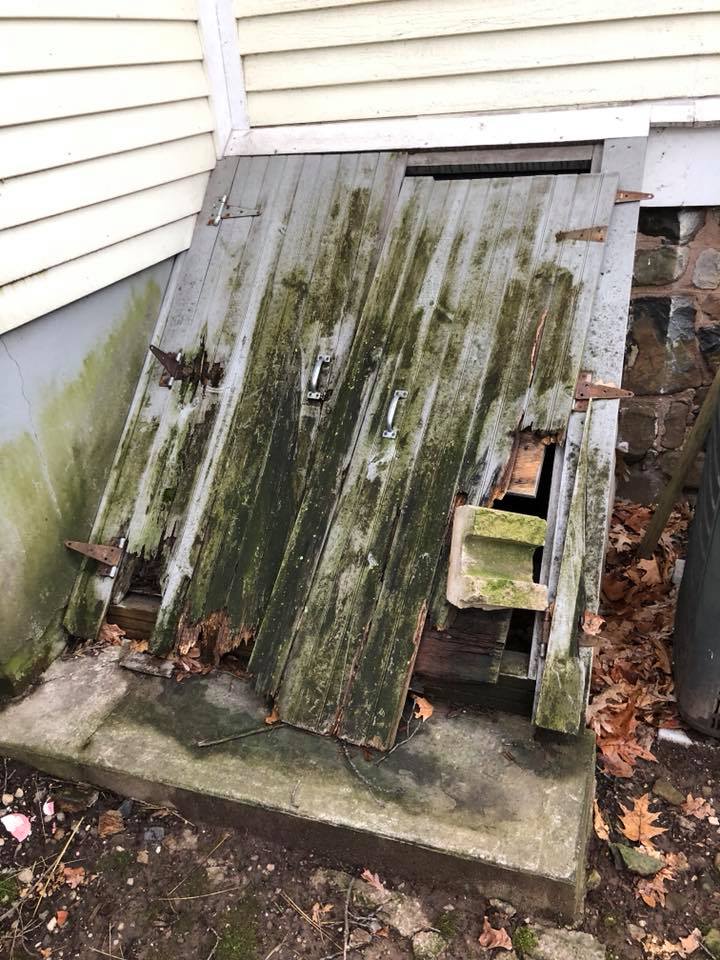
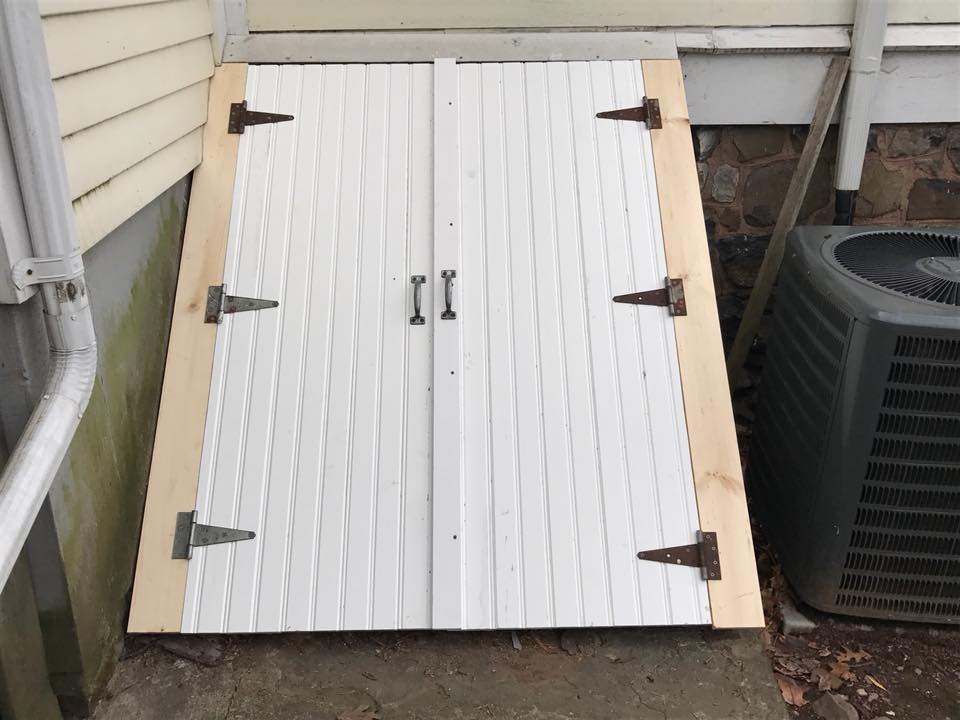
Talking to a skilled handyman, carpenter or craftsman about how to look for wood rot and for wood damage is the first step. The earlier you treat this, the less the home repairs will run.
Home maintenance is the best way to protect your home investment from larger home repairs. Consider these smaller, home repairs that can be done by a skilled handyman:
- Sealing windows and doors and replacing caulk
- Installing awnings over windows and exterior doors to decrease the impact of precipitation.
- Keeping your gutters and downspouts clean to allow proper roof drainage
- Utilize a dehumidifier or exhaust fan bathroom or laundry room
- Cleaning the exterior of the home with a simple powerwashing
- Address exterior wood, paint, and roof damage
- Don’t allow rainwater or snow to accumulate or sit around the house exterior or on the deck.
- Don’t allow leaves and debris to pile up around the house.
- Power wash your deck boards and do deck maintenance, deck staining of boards and railings and stairs to prevent damage
